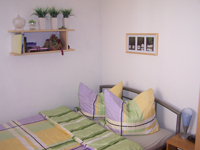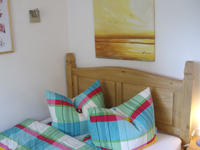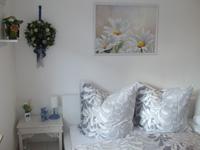Welcome to Cologne at the Rhine!
Coming from Switzerland, the Rhine flows more than 1,200 km into the North Sea in the Netherlands. On its way from the south of Central Europe to the north-west, it is the longest river in Germany and the North Sea tributary with the most water. Its largest area is partly in Germany. Its tributaries include the Neckar, the Main and the Moselle. In addition, the Rhine is one of the busiest waterways in the world.
.gif)
North of Bonn, after the Middle Rhine, begins the North German lowlands and at the same time the Lower Rhine section of the river, which is entirely in North Rhine-Westphalia located. Here the Rhine passes heavily populated areas. Coming from the south, the Rhine flows through Cologne, the largest city on the Rhine, Düsseldorf and the port city of Duisburg, Europe's largest inland port. The longest suspension bridge in Germany, with a span of 500m, crosses the Rhine near Emmerich and the last stretch of the Rhine, the Delta Rhine, begins at the German-Netherlands border. The government seats of three German federal states are located on the Rhine.
The Rhine divides the cathedral city
The Rhine in Cologne divides the city into two parts. On the left and right banks of the Rhine, seen from the flow direction. The right bank of the Rhine in Cologne is now only jokingly called "Schäl Sick". A synonym for "wrong" or "bad side". The term may be derived from a religious separation of the two sides of the Rhine in the early Middle Ages. The Roman Christians preferred the left side of the Rhine, while the pagan Germans settled on the right side. The Rhine formed the border of the Roman Empire. So one could conclude that the "pagan" side was the "bad" or "wrong" side.
In the south of Cologne
When the Rhine in the south of Cologne coming from Bonn makes another right turn and at the left bank districts Godorf and Sürth flows past it past Zündorf on the right bank of the Rhine and the "Groov". A kind of "leisure island" with sandy beaches and a marina. There is also a ferry here that translates to Cologne Weiß on the left bank of the Rhine. Take a bike trip here. On the market place at the Groov you can comfortably drink a coffee and relax from your tour. The Rhine continues to flow past Porz and Westhoven on the right bank of the Rhine, and finally the tranquil district begins on the left-hand side Rodenkirchen. Here you can already see the skyline of Cologne and enjoy the city panorama.
.gif)
The Poller Meadows
On the opposite right-hand side, the Rhine flows past large green areas, the "Poller Wiesen", which belong to the Poll district. Here you can go for a walk, have a picnic, drink coffee, play tennis or football. The Poller Wiesen are a large recreation area close to the city for the people of Cologne and their guests. On the Rodenkirchener side there are large sandy areas, which also invite you to relax. There are campsites on both sides here in the south.
.gif)
.gif)
.gif)
.gif)
.gif)
.gif)
.gif)
.gif)
When the Rhine passes the A4 motorway bridge in the south, we get to the southern inner city of Cologne. Here on the straight in the direction of Cologne Cathedral, the Rhine passes the Oberländer Ufer and the Gustav-Heinemann-Ufer. The southern bridge, which is designed for walkers, cyclists and trains, is also the district boundary for Bayenthal on the left bank of the Rhine. Cologne's southern part begins from here, and the boundary for the Poller Wiesen opposite . The green area continues here, but the area is now Deutzer Hafen.
The Crane Houses
A lot has happened here on the left bank of the Rhine. The relatively new Rheinau port with its crane houses, which are intended to evoke the historic cargo cranes, combines listed port buildings from the "old Rheinau port" with modern architecture. On the right bank of the Rhine, something new will soon be created here in the industrial port Deutz. In the Deutzer Hafen, a mixed city district with many apartments and commercial units is to be created in the coming years. After the southern bridge, the Rhine now passes the Severinsbrücke. The four-lane road bridge with two tracks in the middle for the underground trains also offers footpaths and cycle paths on both sides, as well as stairways to the Rheinau port.
The center of Cologne
From here it gets touristy. The Rhine in Cologne is a real tourist magnet. On the left bank of the Rhine, it now flows past the German Sports and Olympic Museum and the Chocolate Museum. There is also a pretty Christmas market here during the Christmas season. The historic Cologne Senfmuseum is also located near the shore. Opposite there is a large free area on the Rhine, the Deutzer shipyard, where the spring and autumn folk festivals take place.
.gif)
.gif)
And here we are at the Heumarkt. Many major events also take place here. Whether at the Carnival in Cologne or ColognePride in Cologne, Christmas Mark or wine week, public viewing or other events, lots of people come together here. The Deutzer Bridge now connects both banks and what feels like the center of Cologne.
The old town and the bridges
The Rhine now flows on the left side of the Rhine at Cologne's old town, the Cologne Philharmonic and the Museum Ludwig to the Hohenzollern Bridge, the busiest railway bridge in Germany, which also has footpaths and cycle paths on both sides. The bridge connects the Cologne main station with the Deutzer station. Coming from the east, you drive straight towards the Cologne Cathedral, since the bridge is aligned with the central axis of the cathedral. On the right bank of the Rhine, the new Cologne Rheinboulevard can be seen from the Deutzer Bridge along the entire section between the bridges. With the evening sun on your face, you can enjoy the panorama of the old town with the cathedral from here.
After the Hohenzollern Bridge, the Rhine takes the next bend to the right on its way north and passes the beautiful Rheinpark with dancing fountains on the Deutz side, currently the Cologne Opera in the Staatshaus and the exhibition center behind it on the left the old town north with the musical dome and the former Cologne Reichsbahn Headquarters, today "Neue Direktion Köln", the seat of EASA, the European Union Aviation Safety Authority. The next bridge, the "Zoobrücke", connects the northern end of the Rhine Park on the right bank of the Rhine at the Claudius Therme with Cologne Zoo. Here you can also cross the Rhine with the Cologne cable car. You can crown your visit to the Rheinpark or Zoo with a fantastic view of the Cologne skyline.
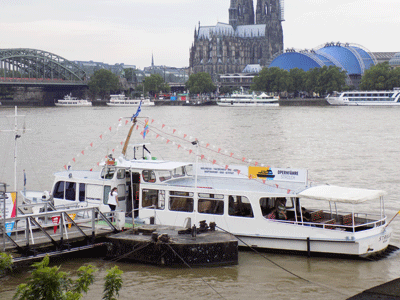
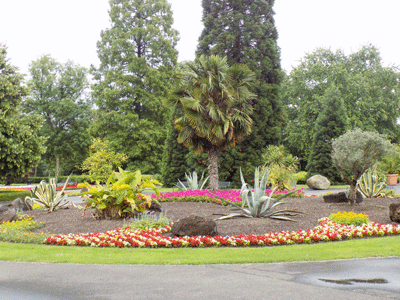
The north of Cologne
Here between the Zoobrücke and the Mülheimer Brücke in the north the Rhine now flows on the right side past the youth park and the Mülheim harbor behind it and on the left past the Niederländer Ufer with the zoo grounds behind it. After the Mülheim Bridge, the Rhine flows in a left curve past the Cranachwaldchen and Niehler Hafen and on the right bank of the Rhine past the districts of Mülheim and Stammheim. An industrial section begins here and the Rhine now leaves Cologne in the direction of Leverkusen.
Accommodations in downtown Cologne!
You want to walk to the cathedral? You want to walk to the fair? Then book one of our Fewo Köln, then you can easily walk to Cologne Cathedral! Simply cross the Rhine over the Deutzer Bridge and stroll through the old town. In about 14 minutes you have reached the cathedral! We look forward to your inquiry!
